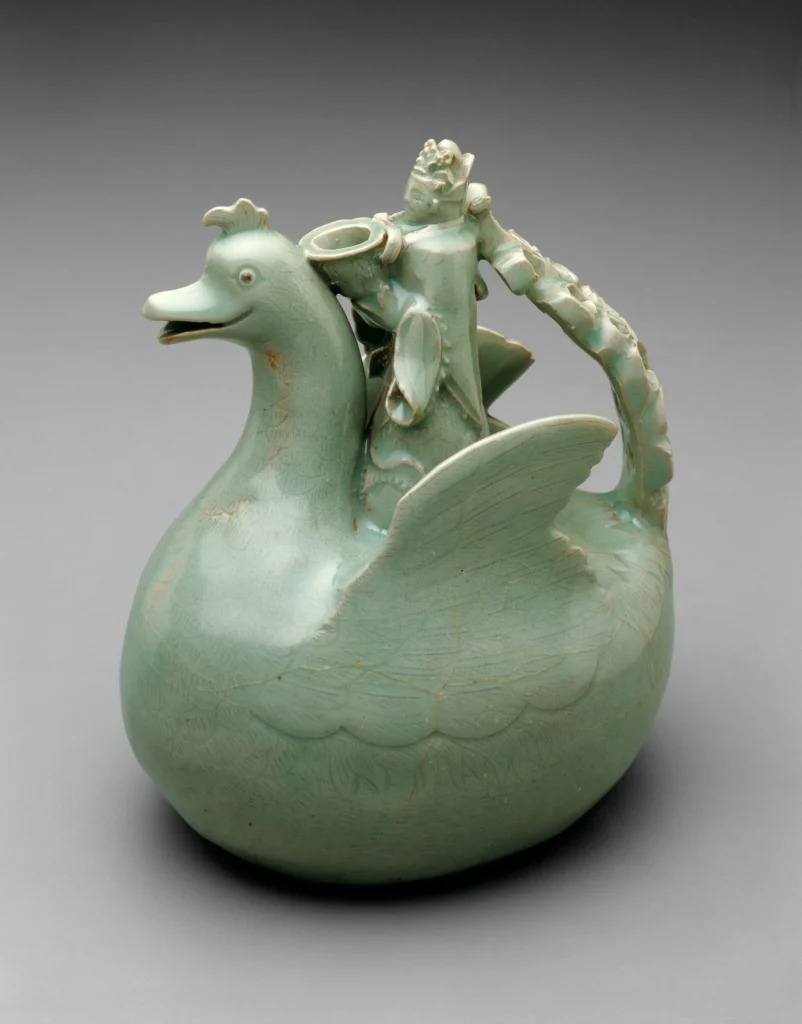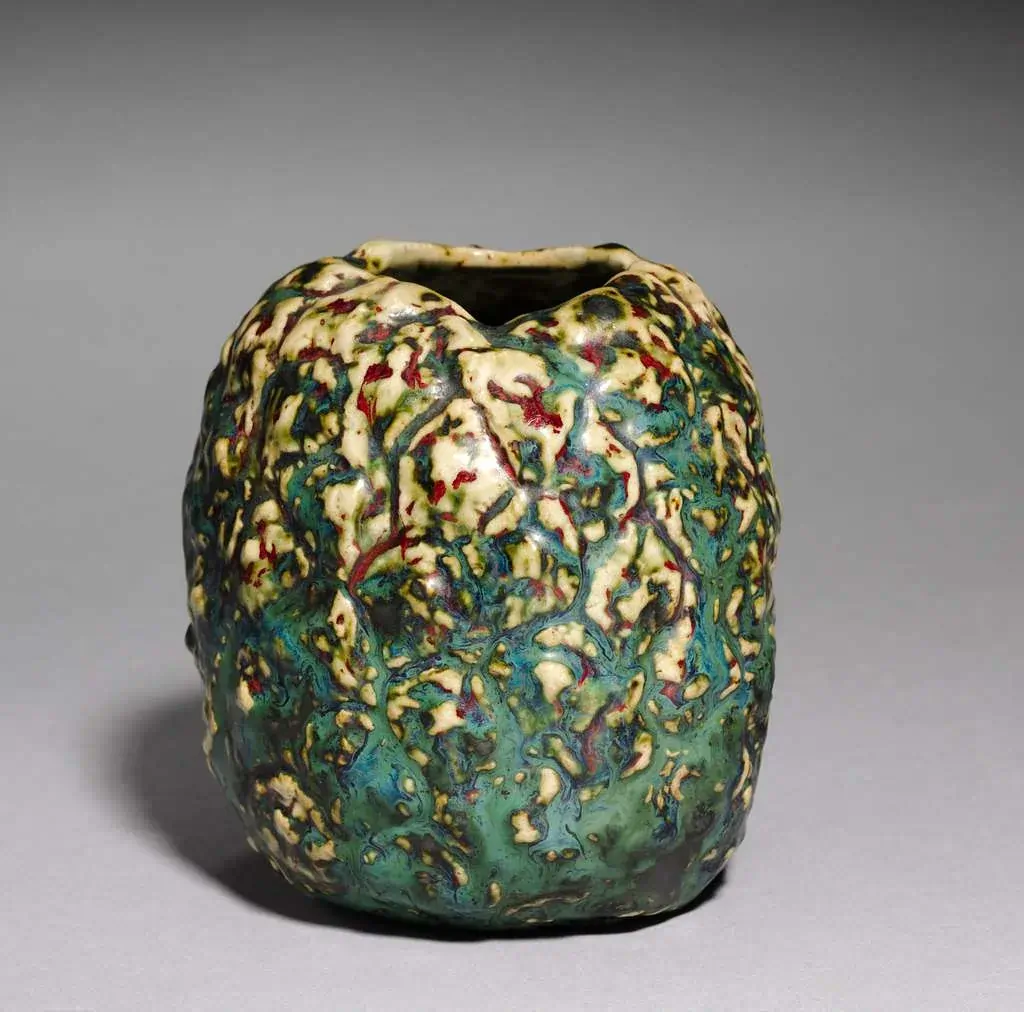The exquisite Kuznetsov porcelain symbolizes a feat in ceramic artistry spanning close, to two hundred years of skill and creativity honed to perfection by generations of the Kuznetsov family craftsmen and artisans.
This comprehensive guide assists, in recognizing the distinguishing features and historical significance of Kuznetsov porcelain from the period before the revolution to the era. It provides insights on identifying pieces through factory markings and delves into the styles of each Kuznetsov factory. Moreover it elucidates the reasons, behind the value of these cherished porcelain dishes and ornaments. Whether you are assembling a collection or examining family heirlooms this guide equips you with insights to cherish these artifacts that represent Russia’s cultural legacy.
The History of Kuznetsov Porcelain
The tale of Kuznetsov porcelain originated back, in 1812 with the opening of their factory located in Gzhel near Moscow marking the beginning of their journey to success through partnerships and expansion efforts over time. In 1841 they set up their factory, in Riga initially specializing in finished earthenware before transitioning to porcelain manufacturing by 1851.
Origins and early development
The company’s smart decisions, on where to locate its operations helped solidify its base of operations. Utilizing the resources of the 190 year old Dulevo factory’s vicinity was a strategy employed by the company. The nearby forests and swamps were tapped into as resources to provide the materials for their kilns. Relying heavily on materials from the Russian Empire became an aspect of their sourcing strategy. Additionally importing supplies from countries like Germany, Holland, France and Scandinavia further enriched their material pool. For their coal needs, during that era they turned to England as their supplier.
Peak years under Matvey Kuznetsov
After Sidor Kuznetsovs passing in 1864, Mavtey assumed leadership of the family business. Ushered in a period of success. The practical knowledge he gained at the Riga factory coupled with his business education enabled him to bring about changes, within the company. A pivotal moment came in 1887 when he established the “Society, for the Production of Porcelain, Faience and Majolica Products.” This initiative led to the expansion of the business to encompass eight enterprises and dominate a portion of Russia’s porcelain industry.
Production reached remarkable levels under Matvey’s leadership:
| Product Type | Units Produced (1908) |
| Porcelain | 11.4 million |
| Faience | 3.7 million |
| Halffaiance | 7.1 million |
Nationalization and Soviet era
The Kuznetsov empire underwent a transformation due, to the October Revolution. Most factories were promptly nationalized; however the Riga facility remained under the family’s control until 1940. Soviet governance brought about changes in production priorities. Introduced innovative and provocative porcelain designs. Kuznetsovs equipment demonstrated its prowess by functioning without major upgrades until the 1930s. Eva Zeisel and Mikhallovich Adamovich emerged as designers during the era; unfortunately Zeisel was compelled to halt her work prematurely due, to Stalins regime.
Kuznetsov Factories and Their Distinctive Styles
The company owned by Kuznetsov operated a series of factories that added features to their large scale porcelain manufacturing process with each plant showcasing a wide range of production techniques and artistic styles.
Dulevo Factory
In 1832 Terenty Kuznetsov established the Dulevo factory known for its agashki” style that became renowned, for producing porcelain in quantities for both local and Middle Eastern markets, with its exquisite combination of dazzling gilding and rich glazes on striking white surfaces to highlight artistic excellence that soared to greater levels when M.A.Vrubel and other renowned artists collaborated with the creative team.
Riga Factory
The 182-year-old Riga facility played a crucial role in the Kuznetsov empire. The factory reached impressive production milestones by 1908:
- Porcelain items: 11.4 million pieces
- Faience products: 3.7 million pieces
- Halffaiance items: 7.1 million pieces
The plant received materials from, around the world. Shipped its goods to destinations in England and Holland as well, as other European markets. The factory’s importance increased as it became the representative of the Kuznetsov name while Soviet authorities assumed control of facilities in the interwar era.
Gardner Factory
The pinnacle of achievement, for the Kuznetsov portfolio was achieved when they acquired the Gardner Factory in 1892 and transformed it into ‘Verbilki Porcelain.’ Despite the change in ownership the factory maintained its tradition of producing pieces and upheld its dedication to quality by retaining the Gardner mark for exports, to Eastern markets.
Other Notable Factories
The Kuznetsov Empire had a reach that encompassed impressive production facilities of note. The Budyan Factory became renowned, for its creation of budget top notch faience tableware since its establishment in 1887.The Auerbach Factory diversified its offerings after being acquired in 1870 to include dinner sets and interior decorations well as iconostases. The Slavyansk Factory focused on faience production from 1892 to 1915.While the Pesochnoye Village Factory distinguished itself by producing goods tailored specifically for markets, in the East.
Identifying Authentic Kuznetsov Porcelain
Authenticating Kuznetsov porcelain involves examining unique characteristics and distinguishing markings that differentiate these pieces from counterfeits requiring collectors and aficionados to consider various factors to confirm the legitimacy of these precious artifacts.
Common marks and stamps
The Kuznetsov porcelain displays a range of factory symbols that have changed over manufacturing eras often taking on vignette shapes, with impressed marks outlined in blue or green on the raw material used for production each factory’s unique marking patterns revealing its own history and character.
| Factory Location | Mark Characteristics |
| Dulevo | Blue overglaze, Arabic signatures for Asian markets |
| Riga | Complex designs with ornate borders in overglaze blue |
| Gardner | Retained traditional red mark post-acquisition |
How to Spot Genuine Pieces
Real Kuznetsov porcelain has these unique features:
- A delicate white color that carries subtle blue undertones
- A slight transparency that shows the use of natural materials
- A clear, bell-like sound rings out when you tap it
- Smooth, flawless surfaces with perfect bottom edges
- Elegant decoration patterns that leave some areas untouched
Dating Kuznetsov porcelain
To accurately date these pieces of art from the Novokharitonovsky period and, beyond requires examining factors. The Novokharitonovsky period artworks exhibit marking patterns while subsequent pieces showcase factory characteristics of their own. The color of each mark serves as an indicator of the products quality; red, blue and green marks denote grades of quality.
These specific factory marks help identify different production periods:
- Pre-partnership period (1832-1889)
- Partnership era (1889-1917)
- Early Soviet period (post-1918)
In items you will find simpler designs while pieces commissioned by the royal family tend to showcase more intricate decorations of higher quality craftsmanship that has been maintained consistently over time contributing to the renowned reputation of Kuznetsov porcelain, within the Russian Empire.
Collecting and Valuing Kuznetsov Porcelain
In decades starting from the 1970s up, to now Kuznetsov porcelain has experienced growth in its market value and popularity among collectors globally who recognize its historical and artistic significance The demand, for these pieces keeps rising notably with the presence of museum collections and international auctions.
Popular collectible items
Enthusiastic collectors worldwide actively pursue Kuznetsovs porcelain figurines crafted at the Imperial Porcelain Manufactory and Gardner’s Factory for their sought after nature in the market of premium collectibles, like Fuseau vases and exclusive royal family commissions.. The Arabeskovy set holds value among enthusiasts along with the Banketny and Yusupovsky service sets.. Dedicated collectors pay attention to items such, as the unique “war series’ plates and bespoke pieces commissioned by royal offices.
Factors affecting value
These elements shape the market value of Kuznetsov porcelain:
| Factor | Impact on Value |
| Age | Pre-revolutionary pieces fetch higher prices |
| Rarity | Limited production runs boost value by a lot |
| Condition | Original gilding and painting quality are significant |
| Provenance | Royal or notable ownership history adds premium |
| Factory Origin | Some facilities’ pieces hold more value |
Russian markets price these pieces at about a quarter of Western market values. This price gap creates authentication risks that buyers should consider.
Tips for new collectors
Success in collecting depends on paying attention to several crucial details:
- Get into the quality of painting and gilding closely – these features are hard to fake convincingly
- Study how factory marks and numbers are placed on the bottom of pieces
- Match the shape and form with known authentic examples
- You might want to start with commercial pieces that give you affordable entry points
- Pick specialized categories or specific factory items
- Keep track of current market values through auction results
- Keep records of where pieces come from
- Buy pieces from 50+ year old dealers who provide authentication guarantees
The British, the Museum of the Imperial Porcelain Factory, in St.Petersburg house collections that offer valuable insights to collectors seeking authentic pieces. The exhibits, in these museums display specimens that highlight the characteristics of genuine Kuznetsov porcelain.
Conclusion
The exquisite Kuznetsov porcelain represents a milestone, in the field of decorative arts with its rich history of skilled craftsmanship passed down through generations within the family lineage. Each item tells a story of Russian evolution through its characteristics. From the early creations in a modest family workshop, to the magnificent works produced during the empires flourishing era. Authenticating original Kuznetsov pieces can be done by identifying the factory markings and unique design elements that are reflective of their style and production traits.
The allure of Kuznetsov porcelain extends well beyond its origins, with pieces finding homes in museums and private collections worldwide for their appeal and value appreciation over time through understanding the factory origins and artistic attributes associated with different production eras each piece represents a significant connection, to Russia’s rich artistic legacy and the enduring porcelain heritage of the Kuznetsov family.
FAQs
Q: How can you recognize the markings on Japanese porcelain?
A: Japanese porcelain marks are typically read from top to bottom and right to left. These marks often include signatures followed by a suffix such as Sei, Tsukuru, or Saku, which mean “made,” or Ga, Dzu, or Fude, which translate to “painted” or “drawn.” Additionally, they may include place names like Satsuma, Kutani, Seto, etc.
Q: What are considered the most valuable marks on porcelain?
A: Some of the most esteemed porcelain marks include Chinese Reign Marks, such as those from the Qing Porcelain Kangxi Reign, Wedgwood’s iconic “W,” Delft Blue Pottery marks, Meissen’s Crossed Swords, Moorcroft Pottery, Vintage Spode, Coalport Porcelain Company, and Roseville Pottery.
Q: How can you identify marks on Chinese porcelain?
A: Chinese porcelain typically features a six-character hallmark system read from top to bottom and right to left. Generally, the first two characters are reign marks, followed by two emperor marks, and the last two indicating placement. If there are only four characters, it usually omits the reign marks.
Q: What is the significance of numbers on the bottom of porcelain pieces?
A: Numbers found on the bottom of porcelain items often represent the year of manufacture, known as a date mark. In England, there has been a system of registration marks since 1842, shaped like a diamond, which indicates the material, year, month, day, and bundle number.



